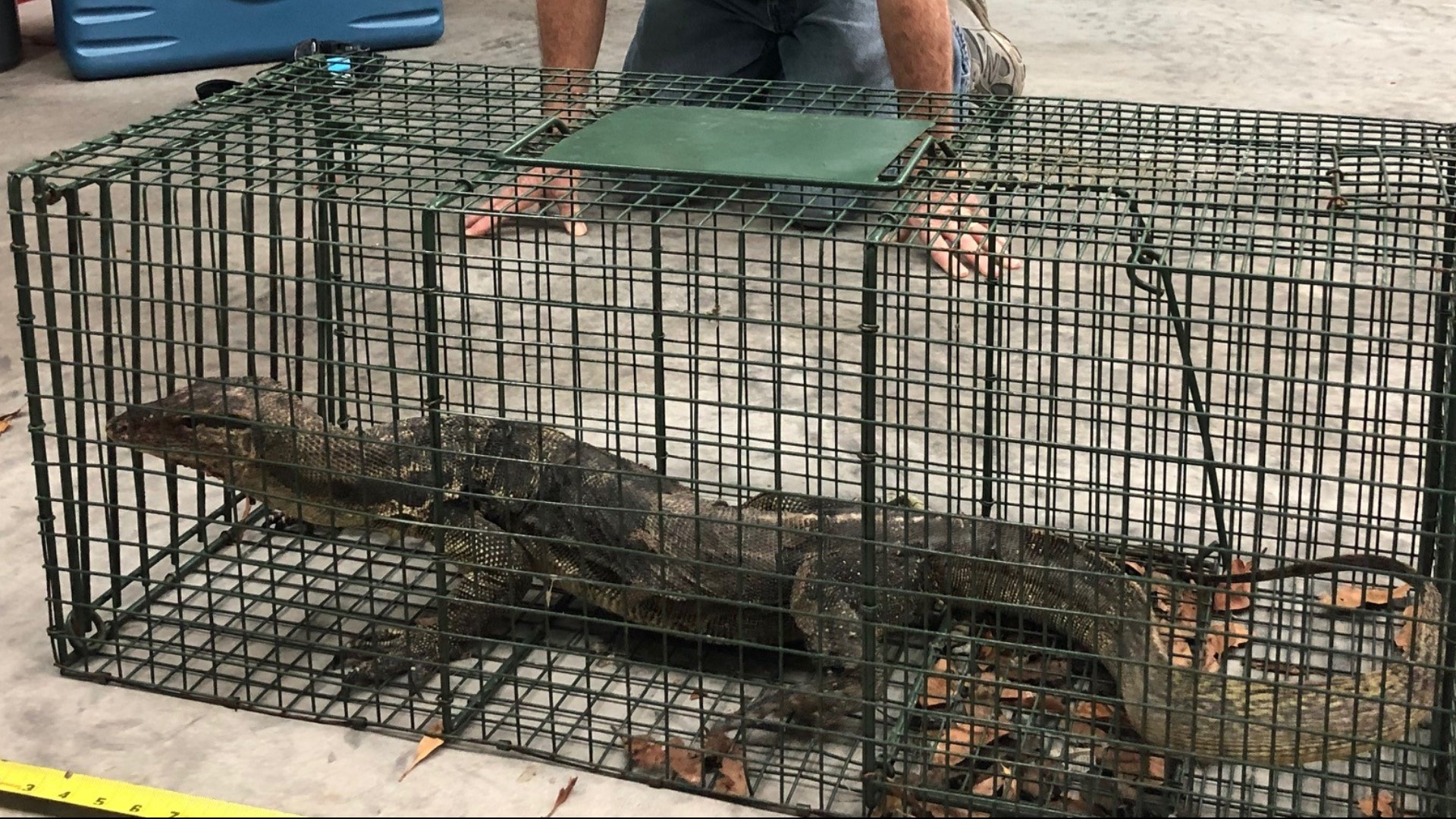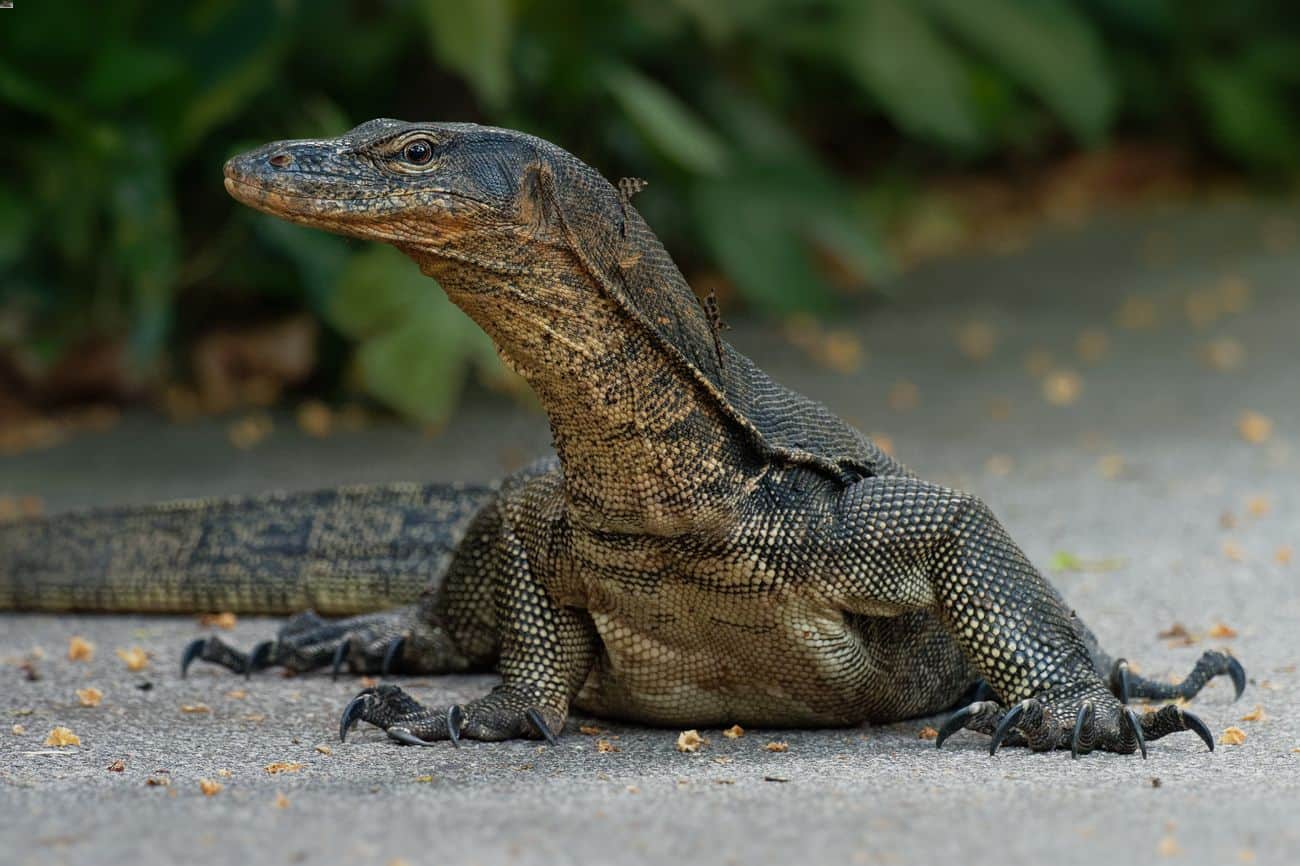Asian Water Monitor in Florida: Asian Water Monitor Florida

The Asian water monitor (Varanus salvator) is an invasive species that has become established in Florida. It is the largest lizard in the state, and it is known for its aggressive behavior and its ability to prey on a wide variety of animals.
Current Distribution and Population
The Asian water monitor was first introduced to Florida in the 1990s, and it has since spread throughout the state. It is now found in all 67 counties, and it is considered to be one of the most common reptiles in Florida. The population of Asian water monitors in Florida is estimated to be in the hundreds of thousands.
Impact on the Native Ecosystem
The Asian water monitor has had a significant impact on the native ecosystem of Florida. It preys on a variety of native animals, including birds, mammals, and reptiles. It also competes with native predators for food and resources. The introduction of the Asian water monitor has led to the decline of several native species, including the American crocodile and the Florida scrub jay.
Conservation Efforts
There are a number of conservation efforts underway to manage the population of Asian water monitors in Florida. These efforts include:
* Public education campaigns to raise awareness of the threat posed by the Asian water monitor
* Trapping and removal programs
* Research to develop new methods of control
Biology and Behavior of the Asian Water Monitor

The Asian water monitor (Varanus salvator) is a large lizard native to Southeast Asia. It is the largest lizard in Asia and one of the largest in the world, with males reaching lengths of up to 2.5 meters (8 feet) and weighing up to 70 kilograms (150 pounds). Females are smaller, typically reaching lengths of up to 1.5 meters (5 feet) and weighing up to 20 kilograms (45 pounds).
The Asian water monitor has a long, slender body with a powerful tail that makes up about two-thirds of its total length. Its scales are dark brown or black with yellow or cream-colored spots. It has a long, forked tongue that it uses to sense its surroundings.
The Asian water monitor is a semi-aquatic lizard that spends much of its time in or near water. It is an excellent swimmer and diver and can stay submerged for up to 30 minutes. It is also a skilled climber and can often be seen basking on branches or rocks.
The Asian water monitor is a carnivore and its diet consists mainly of fish, frogs, birds, and small mammals. It is also known to eat carrion and has been known to attack livestock and even humans.
The Asian water monitor is a solitary animal and only comes together with other individuals during the breeding season. Females lay clutches of up to 40 eggs in burrows or hollow logs. The eggs hatch after about 60 days, and the young lizards are independent from birth.
The Asian water monitor is a territorial animal and will defend its territory from other lizards. It is also a very aggressive animal and will not hesitate to bite if it feels threatened.
The Asian water monitor is a fascinating and powerful creature. It is an important part of the ecosystem in Southeast Asia and plays a role in controlling the populations of other animals.
Physical Characteristics and Adaptations
The Asian water monitor is a large lizard with a long, slender body and a powerful tail. It has a long, forked tongue that it uses to sense its surroundings. Its scales are dark brown or black with yellow or cream-colored spots.
The Asian water monitor has several adaptations that help it to survive in its semi-aquatic environment. Its long, slender body allows it to move quickly through the water. Its powerful tail helps it to swim and dive. Its long, forked tongue allows it to sense its surroundings even when it is submerged.
Feeding Habits
The Asian water monitor is a carnivore and its diet consists mainly of fish, frogs, birds, and small mammals. It is also known to eat carrion and has been known to attack livestock and even humans.
The Asian water monitor is an opportunistic feeder and will eat whatever is available. It is a skilled hunter and will often ambush its prey from the water. It will also scavenge for food and will often eat carrion.
Habitat Preferences
The Asian water monitor is a semi-aquatic lizard that spends much of its time in or near water. It is found in a variety of habitats, including swamps, marshes, rivers, and lakes. It is also found in mangrove forests and coastal areas.
The Asian water monitor prefers to live in areas with plenty of vegetation and cover. It will often use trees, rocks, and burrows for shelter.
Reproductive Behavior
The Asian water monitor is a solitary animal and only comes together with other individuals during the breeding season. Females lay clutches of up to 40 eggs in burrows or hollow logs. The eggs hatch after about 60 days, and the young lizards are independent from birth.
The Asian water monitor is a territorial animal and will defend its territory from other lizards. It is also a very aggressive animal and will not hesitate to bite if it feels threatened.
Comparison to Other Monitor Lizard Species
The Asian water monitor is one of the largest monitor lizard species in the world. It is similar in size to the Nile monitor (Varanus niloticus) and the Komodo dragon (Varanus komodoensis).
The Asian water monitor is more closely related to the Nile monitor than it is to the Komodo dragon. The Asian water monitor and the Nile monitor are both semi-aquatic lizards that share many of the same physical characteristics and behaviors.
The Komodo dragon is the largest monitor lizard species in the world. It is a terrestrial lizard that lives in the dry forests of Indonesia. The Komodo dragon is a powerful predator that preys on a variety of animals, including deer, pigs, and water buffalo.
Human Interactions with the Asian Water Monitor
Asian water monitor florida – As with any wild animal, interactions with Asian water monitors should be approached with caution and respect. Understanding their behavior and potential risks is crucial for both human safety and the well-being of these fascinating creatures.
Potential Dangers and Risks
Asian water monitors are powerful predators, capable of delivering a painful bite if they feel threatened. Their sharp claws and strong tails can also cause lacerations or contusions. While unprovoked attacks on humans are rare, it’s essential to avoid approaching or harassing these animals in the wild.
Legal Regulations and Ethical Considerations
In Florida, it is illegal to possess an Asian water monitor as a pet without a permit from the Florida Fish and Wildlife Conservation Commission (FWC). Permits are typically only issued for educational or scientific purposes. Keeping an Asian water monitor as a pet requires specialized knowledge, facilities, and care that most individuals cannot provide.
Responsible Interactions in the Wild, Asian water monitor florida
If you encounter an Asian water monitor in the wild, the best course of action is to observe it from a distance and avoid any contact. Do not attempt to feed or handle the animal, as this can lead to aggression. If the monitor approaches you, back away slowly and calmly. Never corner or provoke the animal, as this may trigger a defensive response.
The Asian water monitor is a large lizard native to Southeast Asia. It is a semi-aquatic species that is often found in and around water bodies. The Asian water monitor is a powerful predator that feeds on a variety of animals, including fish, frogs, and small mammals.
It is also a popular pet, and some people keep them in their homes. Did you know that the cast of the popular TV show “Yellowstone” is married? Click here to learn more about the cast and their relationships. The Asian water monitor is a fascinating creature that is well-adapted to its environment.
It is a powerful predator that plays an important role in the ecosystem.
The Asian water monitor, a formidable lizard native to Southeast Asia, is a fearsome predator that can grow up to eight feet in length. While its presence in Florida has raised concerns, the upcoming clemson vs coastal carolina game promises to provide a thrilling spectacle on the gridiron.
However, it’s important to remember that the Asian water monitor remains a potential threat to the state’s ecosystem, and efforts to control its population are crucial.
The Asian water monitor is a large lizard found in Southeast Asia. It is a member of the family Varanidae, which also includes the Komodo dragon. The Asian water monitor is a semi-aquatic species that is found in both freshwater and saltwater habitats.
It is a carnivore that feeds on a variety of animals, including fish, frogs, snakes, and birds. The Asian water monitor is a popular pet in some parts of the world, but it can be dangerous if not handled properly.
For more information on the Asian water monitor, you can visit supplemental security income news. The Asian water monitor is a fascinating creature that is well-adapted to its environment.
The Asian water monitor lizard, an invasive species in Florida, poses a significant threat to native wildlife. Its voracious appetite for eggs and small animals has raised concerns among conservationists. Ironically, even the CEO of Chipotle , known for its commitment to sustainability, may have inadvertently contributed to the problem by introducing the lizard to Florida through the restaurant’s supply chain.
The ongoing efforts to control the Asian water monitor’s population highlight the complex challenges posed by invasive species and the need for proactive measures to protect native ecosystems.
The Asian water monitor lizard, an invasive species that has established itself in Florida, poses a threat to native wildlife. Its presence has raised concerns among homeowners associations (HOAs), leading to the introduction of the “DeSantis HOA bill” ( desantis hoa bill ).
This bill aims to give HOAs more authority to regulate invasive species, including the Asian water monitor lizard. While the bill has its supporters, it has also faced criticism from those who argue that it could lead to overreach by HOAs and infringement on property rights.